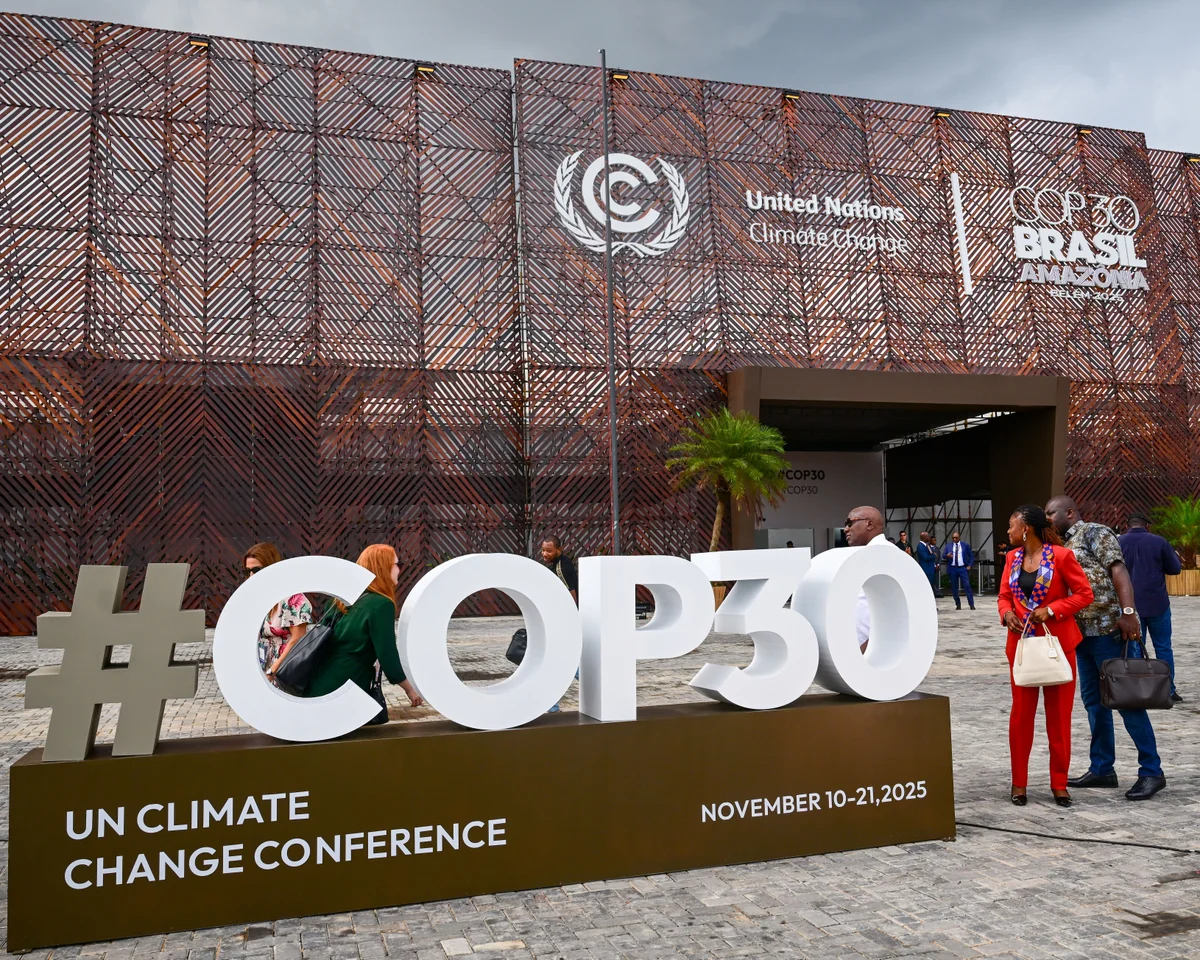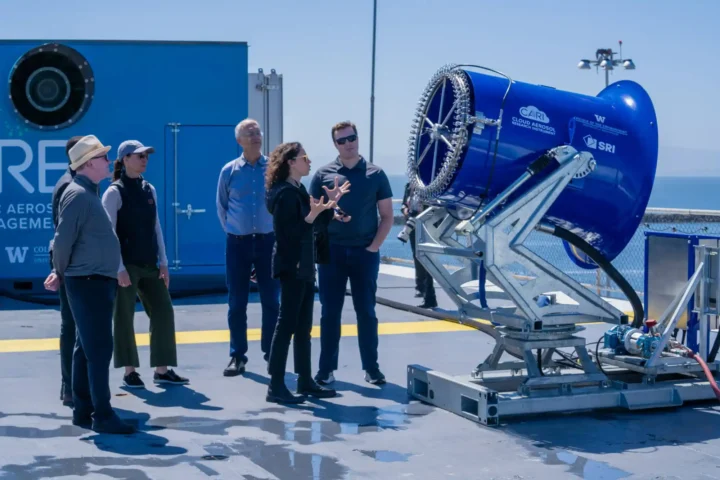The 2025 United Nations Climate Change Conference, COP30, currently underway in Belém, Brazil, represents a critical moment as the global community reboots its commitment to climate action. Taking place 33 years after the landmark 1992 Rio Earth Summit held in Brazil, this summit is being described as a “climate conference of truth,” tasked with accelerating the transition from promises to implementation amid an alarming climate crisis. This op-ed explores the notable initiatives put forward by key countries, including India, and examines how these efforts shape the future of global climate governance.
The UN Climate Conference kicked off in Brazil with an urgent call for more ambitious #ClimateAction.#COP30 aims to accelerate action under the #ParisAgreement, strengthen international cooperation & speed up action across all sectors of all economies.https://t.co/wI9ralPUWc pic.twitter.com/ASi7wn2LG7
— United Nations (@UN) November 11, 2025
COP30 convenes under the theme “Delivering on the Paris Promise,” a pivotal 10-year milestone since the 2015 Paris Agreement, which committed nations to limit global temperature rise to well below 2°C and strive for 1.5°C. The latest reports highlight alarming trends, with 2025 expected to be one of the warmest years on record and greenhouse gas emissions still on the rise globally, underscoring the urgent need for scaled-up actions.
Delighted to join EU Commission President @vonderleyen, German Chancellor Friedrich Merz @bundeskanzler, Finnish President @alexstubb & other leaders at #COP30 to discuss how well-designed industrial strategies can boost competitiveness & resilience, while reducing emissions pic.twitter.com/oG3oYRxQVo
— Fatih Birol (@fbirol) November 7, 2025
Central to the talks is the Baku-to-Belém Roadmap: a $1.3 trillion climate finance mobilization plan to enable developing nations to implement climate adaptation and mitigation measures. This includes boosting multilateral climate funds, innovative financing mechanisms such as sovereign debt conversion to climate investments, and dismantling barriers to climate policy enforcement. Nations are also encouraged to update and enhance their Nationally Determined Contributions (NDCs) to bridge the gap between current climate plans and the required emissions reductions target of 60% by 2030; current NDCs would deliver only about a 10% cut.
Brazil’s Signature Initiative: Tropical Forests Forever Facility
As the host nation and custodian of the Amazon rainforest, Brazil has introduced the Tropical Forests Forever Facility (TFFF), a $125 billion blended-finance investment fund focused on tropical forest conservation. Its primary aim is to provide sustained payouts to forest-preserving efforts beginning in 2026, incentivizing countries that harbor tropical forests to protect these crucial carbon sinks. This facility seeks to marry sovereign investments with private capital in a pioneering manner that promotes long-term sustainability and carbon sequestration.
European Union: Ambitious Emissions Cuts and Enhanced Targets
The European Union has submitted an updated NDC aiming to reduce emissions by 66.25% to 72.5% by 2035 compared to 1990 levels, positioning itself as a global leader in emission reductions. This ambitious range demonstrates the EU’s resolve to align its policies with the 1.5°C warming limit and to lead by example in industrialized country commitments.
This target builds on previous achievements under the EU’s climate strategies, emphasizing cleaner energy, transport reforms, and increased resource efficiency. The EU’s leadership is critical at COP30 for encouraging other major economies to follow suit and to help unlock further climate finance.
United States: Renewed Climate Commitments
While details at COP30 about the United States’ announcements are still emerging, the US delegation is expected to reinforce its commitment to deep decarbonization pathways in line with its 2030 emission reduction goals. The US has prioritized mobilizing private and public finance, technology deployment for renewable energy, and resilience-building mechanisms. Given the scale of the US economy and its emissions profile, its leadership and cooperation with other nations on clean energy technology transfer and financing are vital to global progress.
India’s Climate Action and Leadership
India remains a key player at COP30, advocating for climate justice, equitable finance, and adaptation measures. The Indian delegation has emphasized that COP30 should be the “COP of Adaptation,” urging developed countries to restore trust by fulfilling past financial commitments and providing predictable, grant-based funding for adaptation and loss and damage. Reaffirming its commitment to a low-carbon development pathway, India has reduced its emission intensity of GDP by 36% between 2005 and 2020—surpassing its revised NDC target five years early—largely through expanding non-fossil power capacity to over 50% of installed electricity generation. With ambitious goals to reach 500 GW of renewable energy by 2030, India is advancing initiatives such as the International Solar Alliance, the National Hydrogen Mission, and the LIFE Mission focused on nature-based solutions. At COP30, India’s grassroots engagement was also recognized as AJSA India received the 2025 Local Adaptation Champion award for empowering tribal women in Odisha to lead community-level climate resilience efforts, underscoring the vital link between social inclusion and climate action.
China’s Path Toward Climate Neutrality
China, the world’s largest emitter, faces scrutiny at COP30 as it navigates balancing economic growth with climate commitments. The country is focusing on implementing its long-term low emission development strategies (LT-LEDS) and has introduced sector-specific targets to curb emissions from coal, steel, and heavy industries. China continues to invest heavily in renewable energy but is also facing calls to accelerate its coal phase-out timeline and increase climate finance contributions to developing countries.
China’s updated NDC is expected to contribute substantially to global emissions reduction, but significant challenges remain in ensuring implementation matches ambition.
Global Cooperation and Climate Finance
COP30 reflects a new phase emphasizing implementation, justice, and equity. The COP29 decision to triple climate finance from $100 billion to $300 billion annually for developing countries, alongside the Baku-to-Belém Roadmap that envisions scaling up to $1.3 trillion, signals stronger financial backing than ever before. However, countries continue to debate mechanisms to ensure these funds are predictable, accessible, and grant-based, particularly to support adaptation and loss and damage in the most vulnerable regions.
The conference underscores that progress not only requires national commitments but also enhanced international cooperation to dismantle barriers such as investment clauses that allow lawsuits against climate policies and to foster enabling environments for green investments.
COP30 is shaping up as a decisive event where the global climate agenda pivots from rhetoric to concrete action. With substantial financial commitments, innovative mechanisms like Brazil’s Tropical Forests Forever Facility, and enhanced national climate strategies from India, the EU, the US, and China, the summit seeks to close the yawning gap between aspirations and implementation.
References and Further Reading
- United Nations News. (2025, November 9). COP30 kicks off with urgent call to deliver on climate promises and scale up finance. UN News. https://news.un.org/en/story/2025/11/1142822
- European Commission. (2025, November 9). COP30 – Climate Action – European Commission. https://climate.ec.europa.eu/news-your-voice/news/5-things-you-should-know-about-cop30-un-climate-conference-20251106_en
- Renewable Matter. (2025, November 9). Tropical Forest Forever Fund: the controversial Brazilian project at the core of COP30. https://renewablematter.eu/articles/article/tropical-forest-forever-fund-the-controversial-brazilian-project-at-the-core-of-cop30
- World Resources Institute. (2025, June 10). 5 Ways COP30 Can Make Progress Where Countries’ Climate Plans Fall Short. https://wri.org/insights/5-ways-cop30-can-make-progress-where-countries-climate-plans-fall-short
- Council on Foreign Relations. (2025, November 9). China’s Latest Climate Pledges Fall Short of What’s Needed. https://cfr.org/in-brief/chinas-latest-climate-pledges-fall-short-whats-needed
- World Meteorological Organization. (2025, November 5). State of the Climate Update for COP30. https://wmo.int/news/state-climate-update-cop30
- Brookings Institution. (2025, November 5). What will COP30 mean for climate action? https://brookings.edu/articles/what-will-cop30-mean-for-climate-action
- Center for Strategic and International Studies (CSIS). (2025, November 10). What is COP30 and why does it matter? https://cnn.com/2025/11/10/what-is-cop30-and-why-does-it-matter
- Nature Based Solutions Initiative. (2025, November 6). Tropical Forest Forever Facility launched at COP30 Belém. https://naturebasedsolutionsinitiative.org/news/tropical-forest-forever-facility-launched-at-cop30-belem
- Climate Action Tracker. (2025, November). COP30 Global Climate Action Report 2025. https://unfccc.int/documents/yearbook-global-climate-action-2025
- Climate Diplomacy. (2025, November 9). China’s new climate goal brings confidence to the world. https://en.chinadiplomacy.org.cn/2025-11/09/content_79432125.htm
- Council on Foreign Relations. (2025, November 11). COP30 gets underway in Brazil — and a Trump-shaped hole is hanging over the climate summit. https://cnbc.com/2025/11/10/cop30-gets-underway-in-brazil-and-a-trump-shaped-hole-is-hanging-over-the-climate-summit
- United Nations Framework Convention on Climate Change (UNFCCC). (2025). Yearbook of Global Climate Action 2025. https://unfccc.int/documents/yearbook-global-climate-action-2025
- COP30 Brasil Amazônia. (2025). COP30 Official Website. https://cop30.br/en











